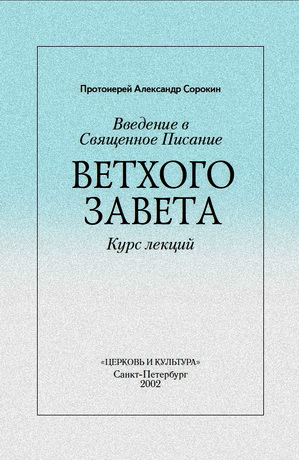
Cambridge History of the Bible – Volumes 1-4
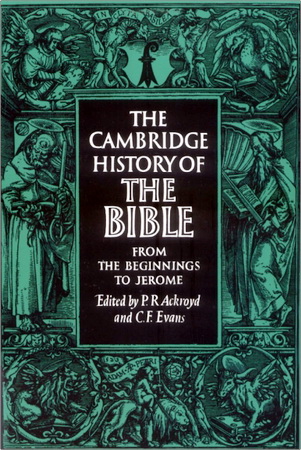
With the exception of several chapters of Daniel and Ezra, which are written in Aramaic, the language of the Old Testament is Hebrew. The Creation story (cf. Gen. 2: 19 ff.) and the story of the tower of Babel (Gen. 11) imply that Hebrew was the original language of mankind. When we turn from folk legend to linguistic origins, however, Hebrew does not appear to have been the original language of the Hebrews themselves, but the language of the inhabitants of Canaan who were conquered and partly displaced by Joshua; it is more accurately described once in the Old Testament (Isa. 19: 18) as 'the language of Canaan' (it is usually referred to by the Old Testament writers as 'Jewish', e.g. Isa. 36: 11; 2 Chron. 32: 18). The more primitive nomad desert tribes from across the Jordan appear to have been gradually assimilated to the culture and civilisation of the conquered Canaanites and to have adopted their speech as well as much in their culture, if not their manner of life; we do not know the precise nature of the original language of the Hebrew invaders, but it was probably a tribal dialect of the Old Aramaic, with possibly close affinities with the speech of Canaan (cf. Deut. 26: 5 RSV).
The name 'Hebrew' to describe the language of the Old Testament is derived from the ancient name of the Israelites 'Ibriyyim, explained in the Old Testament as a patronymic (Gen. 10: 21). The name, in the form Habiru, is now known from Mari (second millennium B.C.) and many other second-millennium cuneiform sources. Various modern etymologies explain the word as 'the dwellers beyond the River', i.e. either the Jordan or (more probably) the Euphrates. (Abraham was born 'beyond the River' in this latter sense.) Other explanations are that it was a term applied to freebooters and mercenaries in Palestine and its neighbourhood (e.g. in the Tell-el-Amarna letters, 1400 B.C.); another proposal is that the word means 'those who pass over boundaries', i.e. nomads, and was a social classification. The early nomadic tribes of the Patriarchs may have been so named for their customs and manner of life. (The name Israel came to be applied, after the conquests of Joshua, to the invading nomad tribes, not necessarily all Habiru, forged into a nation by the conquest and settlement in Canaan.) The application of the name to the Hebrew language appears first in the Greek adverb 'Eppotiorf, 'in (the) Hebrew language', in the prologue to ben Sira; it is also found in the New Testament, e.g. Rev. 9:11, in Josephus and, less frequently, in the Talmud (the rabbis prefer the description 'the holy tongue').
The Cambridge History of the Bible – Volume 1 – From the Beginnings to Jerome
Edited by P. R. Ackroyd. – Cambridge: Cambridge University Press, 1993. – 691 pp.
ISBN 0-521-07418-5 Volume 1 hardback
ISBN 0-521-09973-0 Volume 1 paperback
ISBN 0-521-29018-X set of three paperbacks
The Cambridge History of the Bible – Volume 1 – Contents
- Corrections to the text
- Preface
- Preface to the paperback edition
- Additions to the bibliography
-
I. LANGUAGE AND SCRIPT
- 1. THE BIBLICAL LANGUAGES by Matthew Black, Professor of Biblical Criticism and Principal of St Mary's College, University of St Andrews
- 2. THE BIBLICAL SCRIPTS by the late David Diringer, formerly Reader in Semitic Epigraphy, Cambridge University
-
II. BOOKS IN THE ANCIENT WORLD
- 3. BOOKS IN THE ANCIENT NEAR EAST AND IN THE OLD TESTAMENT by D. J. Wiseman, Professor of Assyriology, University of London
- 4. BOOKS IN THE GRAECO-ROMAN WORLD AND IN THE NEW TESTAMENT by C. H. Roberts, Fellow of St Johns College, Oxford
-
III. THE OLD TESTAMENT
- 5. THE OLD TESTAMENT IN THE MAKING by Peter R. Ackroyd, Samuel Davidson Professor of Old Testament Studies, University of London, King's College
- 6. CANONICAL AND NON-CANONICAL by G. W. Anderson, Professor of Hebrew and Old Testament Studies, Edinburgh University
- 7. THE OLD TESTAMENT TEXT by Shemaryahu Talmon, Professor of Bible, The Hebrew University of Jerusalem
- 8. BIBLE AND MIDRASH: EARLY OLD TESTAMENT EXEGESIS by G. Vermes, Reader in Jewish Studies, Oxford University
-
IV. THE NEW TESTAMENT
- 9. THE NEW TESTAMENT IN THE MAKING by C. F. Evans, Professor of New Testament Studies, University of London, King's College
- 10. THE NEW TESTAMENT CANON by R. M. Grant, Carl Darling Buck Professor of Humanities, Divinity School, Chicago, Department of New Testament and Early Christian Literature
- 11. THE NEW TESTAMENT TEXT by J. N. Birdsall, Senior Lecturer in Theology, Birmingham University
- 12. THE INTERPRETATION OF THE OLD TESTAMENT IN THE NEW by C. K. Barrett, Professor of Divinity, Durham University
-
V. THE BIBLE IN THE EARLY CHURCH
- 13. BIBLICAL EXEGESIS IN THE EARLY CHURCH by R. P. C. Hanson, Professor of Historical and Contemporary Theology, University of Manchester
- 14. ORIGEN AS BIBLICAL SCHOLAR by M. F. Wiles, Regius Professor of Divinity, University of Oxford
- 15. THEODORE OF MOPSUESTIA AS REPRESENTATIVE OF THE ANTIOCHENE SCHOOL by M. F. Wiles
- 16. JEROME AS BIBLICAL SCHOLAR by H. F. D. Sparks, Oriel Professor of The Interpretation of Holy Scriptures, Oxford University
- 17. AUGUSTINE AS BIBLICAL SCHOLAR by Gerald Bonner, Lecturer in Theology, Durham University
- 18. THE PLACE OF THE BIBLE IN THE LITURGY by J. A. Lamb, formerly Librarian of New College, Edinburgh
- Bibliography
- Abbreviations
- Notes on the Plates
- Plates between pages
- Indexes
- General
- Biblical and other references
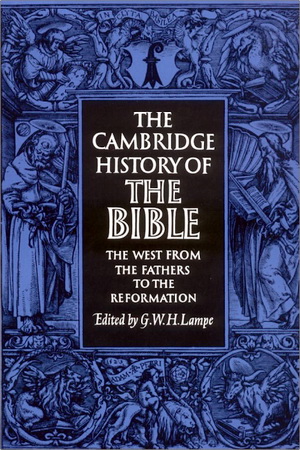 The Cambridge History of the Bible – Volume 2 – The West from the Fathers to the Reformation
The Cambridge History of the Bible – Volume 2 – The West from the Fathers to the Reformation
Edited by G. W. H. Lampe. – Cambridge: Cambridge University Press, 1994. – 625 pp.
ISBN 0-521-04255-0 Volume 2 hardback
ISBN 0-521-29017-1 Volume 2 paperback
ISBN 0-521 -29018-X set of three paperbacks
The Cambridge History of the Bible – Volume 2 – Contents
- Preface page
- I. THE OLD TESTAMENT: MANUSCRIPTS, TEXT AND VERSIONS by the Rev. Professor Bleddyn J. Roberts, D.D., Professor of Hebrew and Biblical Studies, University College of North Wales, Bangor
- II. THE HISTORY OF THE TEXT AND CANON OF THE NEW TESTAMENT TO JEROME by the late C. S. C. Williams
- III. EARLY CHRISTIAN BOOK-PRODUCTION: PAPYRI AND MANUSCRIPTS by T. C. Skeat, Keeper of Manuscripts, British Museum
- IV. JEROME by the late Fr E. F. Sutcliffe, S.J., Old Testament Professor at Heythrop College
- V. THE MEDIEVAL HISTORY OF THE LATIN VULGATE by Raphael Loewe, Lecturer in Hebrew, University College, London
-
VI. THE EXPOSITION AND EXEGESIS OF SCRIPTURE
- 1. TO GREGORY THE GREAT by the Rev. G. W. H. Lampe, Ely Professor of Divinity, University of Cambridge
- 2. FROM GREGORY THE GREAT TO ST BERNARD by Dom Jean Leclercq, O.S.B., D.TH., Professor at the Pontifical Institute S. Anselm, Rome
- 3. THE BIBLE IN THE MEDIEVAL SCHOOLS by Beryl Smalley, F.B.A., Vice-Principal, St Hilda's College, Oxford
- 4. THE BIBLE IN LITURGICAL USE by the Rev. S. J. P. van Dijk, O.F.M.
- 5. THE STUDY OF THE BIBLE IN MEDIEVAL JUDAISM by Erwin I. J. Rosenthal, LITT.D., Reader in Oriental Studies, University of Cambridge
- VII. THE 'PEOPLE'S BIBLE': ARTISTS AND COMMENTATORS by the Very Rev. R. L. P. Milburn, Dean of Worcester
- VIII. BIBLE ILLUSTRATION IN MEDIEVAL MANUSCRIPTS by Professor Francis Wormald, formerly Director of the Institute of Historical Research, London University
-
IX. THE VERNACULAR SCRIPTURES
- 1. THE GOTHIC BIBLE by M. J. Hunter
- 2. ENGLISH VERSIONS OF THE SCRIPTURES BEFORE WYCLIF by Geoffrey Shepherd, Professor of English Medieval Language and Literature, University of Birmingham
- 3. THE WYCLIFFITE VERSIONS by Henry Hargreaves, Lecturer in English, University of Aberdeen
- 4. VERNACULAR SCRIPTURES IN GERMANY AND THE LOW COUNTRIES BEFORE 1500 415 by W. B. Lockwood, D.LITT., Professor of Germanic and Indo-European Philology, University of Reading
- 5. VERNACULAR SCRIPTURES IN FRANCE by C. A. Robson, Fellow of Merton College and Lecturer in French Philology and Old French Literature, University of Oxford
- 6. VERNACULAR SCRIPTURES IN ITALY by Kenelm Foster, O.P., Lecturer in Italian, University of Cambridge
- 7. VERNACULAR SCRIPTURES IN SPAIN by Margherita Morreale, Professor of Spanish Language and Literature, University of Bari
- X. ERASMUS IN RELATION TO THE MEDIEVAL BIBLICAL TRADITION by Fr Louis Bouyer, D.D., of the French Oratory, formerly Professor in the Faculty of Theology of the Institut Catholique de Paris
- Bibliography
- Notes on the Plates
- Plates between pages
- Indexes
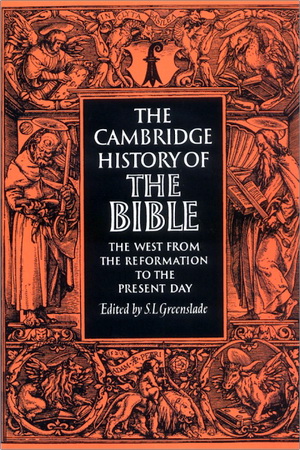 The Cambridge History of the Bible – Volume 3 – The West from the Reformation to the Present Day
The Cambridge History of the Bible – Volume 3 – The West from the Reformation to the Present Day
Edited by S. L. Greenslade. – Cambridge: Cambridge University Press, 2004. – 652 pp.
ISBN 0-521 04254-2 Volume 3 hardback
ISBN 0-521-29016-3 Volume 3 paperback
ISBN 0-521-29018-X set of three paperbacks
The Cambridge History of the Bible – Volume 3 – Contents
- Preface page
- I. THE BIBLE IN THE REFORMATION by ROLAND H. BAINTON, Formerly Titus Street Professor of Ecclesiastical History, Yale University
- II. BIBLICAL SCHOLARSHIP: EDITIONS AND COMMENTARIES by BASIL HALL, Lecturer in Ecclesiastical History in the University of Cambridge
-
III. CONTINENTAL VERSIONS TO C. 1600
- 1. German, by HANSVOLZ, Collaborator in the Weimar Lutherausgabe
- 2. Italian, by KENELM FOSTER, O.P.
- 3. French, by R. A. s A YCE, Fellow of Worcester College, Oxford
- 4. Dutch, bys. VANDER WOUDE, Assistant Librarian, Amsterdam University
- 5. Spanish, by E. M. WILSON, Professor of Spanish, Cambridge University
- 6. The Bible in East-Central Europe, by R. AUTY, Professor of Comparative Philology of the Slavonic Languages, London University
- 7. Scandinavian, by BENT NOACK, Professor of New Testament, Copenhagen University
- IV. ENGLISH VERSIONS OF THE BIBLE, 1525-1611 by S. L. GREENSLADE
- V. THE RELIGION OF PROTESTANTS by the late NORMAN SYKES,formerly Dixie Professor of Ecclesiastical History, Cambridge University
- VI. THE BIBLE IN THE ROMAN CATHOLIC CHURCH FROM TRENT TO THE PRESENT DAY by F. J . CREHAN, S.J.
- VII. THE CRITICISM AND THEOLOGICAL USE OF THE BIBLE, 1700-1950 by W. NEIL, Warden of Hugh Stewart Hall, Nottingham University
- VIII. THE RISE OF MODERN BIBLICAL SCHOLARSHIP AND RECENT DISCUSSION OF THE AUTHORITY OF THE BIBLE by ALAN RICHARDSON, Professor of Theology, Nottingham University
-
IX. CONTINENTAL VERSIONS FROM C. 1600 TO THE PRESENT DAY
- 1. German, by BERNHARD DAMMERMANN, with a note on Catholic versions b y s . L. GREENSLADE
- 2. French, by R. A. SAYCE
- 3. Dutch, by S. VAN DER WOUDE
- 4. Spanish, by E. M. WILSON
- 5. Scandinavian, by BENT NOACK
- 6. Italian, by KENELM FOSTER, O.P.
- X. ENGLISH VERSIONS SINCE 1611 by LUTHER A. WEIGLE, Dean Emeritus of Yale University Divinity School, and Chairman of the Standard Bible Committee,whh.a note on the New English Bible by c. F. D. MOULE, Lady Margaret's Professor of Divinity, Cambridge University
- XI. THE BIBLE AND THE MISSIONARY by ERIC FENN, Professor of Christian Doctrine in the Selly Oak Colleges, Birmingham, and formerly Editorial Secretary of the British and Foreign Bible Society
- XII. THE PRINTED BIBLE by M. H. BLACK
- XIII. EPILOGUE by S. L. GREENSLADE
-
APPENDICES: by D. R. JONES, Lecturer in Theology, Durham University
- 1. Aids to the study of the Bible: a selective historical account of the major grammars, lexicons, concordances, dictionaries and encyclopaedias, and atlases
- 2. Commentaries: a historical note
- Bibliography
- Notes on the Plates
- Plates
- Indexes
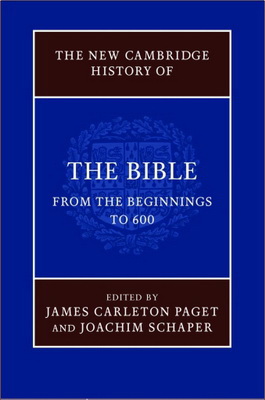 The New Cambridge History of the Bible – Volume 1 - From the Beginnings to 600
The New Cambridge History of the Bible – Volume 1 - From the Beginnings to 600
Edited by JAMES CARLETON PAGET and JOACHIM SCHAPER. – Cambridge: Cambridge University Press, 2013. – 1009 p.
ISBN 978-0-521-85938-7
The New Cambridge History of the Bible – Volume 1 - Contents
Contents
List of figures page
List of contributors
Preface
Abbreviations
Abbreviations of books of the Bible
Table of Psalm numbering
Part I. LANGUAGES, WRITING SYSTEMS AND BOOK PRODUCTION
- 1 · The languages of the Old Testament. Geoffrey Khan
- 2 · Varieties of Greek in the Septuagint and the New Testament. Jan Joosten
- 3 · Writing and book production in the ancient Near East. William M. Schniedewind
- 4 · Writing and book production in the Hellenistic and Roman periods. Larry W. Hurtado and Chris Keith
Part II. THE HEBREW BIBLE AND OLD TESTAMENTS
- 5 · The Old Testament text and its transmission. Eugene Ulrich
- 6 · The literary history of the Hebrew Bible. Joachim Schaper
- 7 · The Old Testament canons. John Barton
- 8 · The ‘apocryphal’ Old Testament. John J. Collins
- 9 · From inner-biblical interpretation to rabbinic exegesis. Gunter Stemberger
- 10 · The Aramaic Targums. C. T. R. Hayward
- 11 · Scriptural interpretation at Qumran. Jonathan G. Campbell
- 12 · The Septuagint. Kristin de Troyer
- 13 · Biblical interpretation in Greek Jewish writings. William Horbury
- 14 · Scripture in the Jerusalem temple. C. T. R. Hayward
- 15 · The political and legal uses of scripture. James W. Watts
- 16 · Modern editions of the Hebrew Bible. Emanuel Tov
Part III. THE NEW TESTAMENT
- 17 · The New Testament canon. Joseph Verheyden
- 18 · The New Testament text and versions. David C. Parker
- 19 · The ‘apocryphal’ New Testament. J . K. Elliott
- 20 · The Old Testament in the New Testament. Dale C. Allison, Jr.
Part IV. BIBLICAL VERSIONS OTHER THAN THE HEBREW AND THE GREEK
- 21 · The Latin Bible. Pierre-Maurice Bogaert
- 22 · The Syriac versions of the Bible. Peter J. Williams
- 23 · The translation of the Bible into Coptic. Wolf-Peter Funk
Part V. THE RECEPTION OF THE BIBLE IN THE POST-NEW TESTAMENT PERIOD
- 24 · The interpretation of the Bible in the second century. James Carleton Paget
- 25 · Gnostic and Manichaean interpretation. Winrich Lohr
- 26 · Origen. Gilles Dorival
- 27 · Eusebius. Michael J. Hollerich
- 28 · Jerome. Adam Kamesar
- 29 · Augustine. Carol Harrison
- 30 · Syriac exegesis. J. F. Coakley
- 31 · Figurative readings: their scope and justification. Mark Edwards
- 32 · Traditions of exegesis. Frances M. Young
- 33 · Pagans and the Bible. Wolfram Kinzig
- 34 · Exegetical genres in the patristic era. Mark W. Elliott
- 35 · The Bible in doctrinal development and Christian councils. Thomas Graumann
- 36 · The Bible in liturgy. Gerard Rouwhorst
- 37 · The Bible in popular and non-literary culture. Lucy Grig
Select bibliography
Index of manuscripts
Index of scriptural and related sources
General index
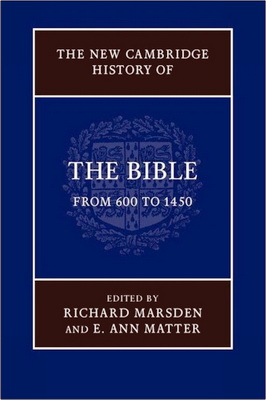 The New Cambridge History of the Bible – Volume 2 - From 600 to 1450
The New Cambridge History of the Bible – Volume 2 - From 600 to 1450
Edited by RICHARD MARSDEN and E. ANN MATTER. – Cambridge: Cambridge University Press, 2012. – 1069 p.
ISBN 978-0-521-86006-2
The New Cambridge History of the Bible – Volume 2 – Contents
List of figures page
List of contributors
Preface
Abbreviations
Abbreviations of books of the Bible
Table of Psalm numbering
Introduction. Richard Marsden
Part I. TEXTS AND VERSIONS
- 1 · The Hebrew Bible. Judith Olszowy-Schlanger
- 2 · The Greek Christian Bible. Barbara Crostini
- 3 · Jewish Greek Bible versions. Nicholas de Lange
- 4 · The Latin Bible, c. 600 to c. 900. Pierre-Maurice Bogaert
- 5 · The Latin Bible, c. 900 to the Council of Trent, 1546. Frans van Liere
- 6 · The Bible in Ethiopic. Ephraim Isaac
- 7 · The Bible in Arabic. Sidney H. Griffith
- 8 · The Bible in Armenian. S. Peter Cowe
- 9 · The Bible in Georgian. Jeff W. Childers
- 10 · The Bible in Slavonic. Henry R. Cooper, Jr.
- 11 · The Bible in Germanic. Andrew Colin Gow
- 12 · The Bible in English. Richard Marsden
- 13 · The Bible in the languages of Scandinavia. Bodil Ejrnæs
- 14 · The Bible in French. Clive R. Sneddon
- 15 · The Bible in Italian. Lino Leonardi
- 16 · The Bible in Spanish and Catalan. Gemma Avenoza
Part II. FORMAT AND TRANSMISSION
- 17 · The Bibles of the Christian East. Georgi R. Parpulov
- 18 · Carolingian Bibles. David Ganz
- 19 · The Latin gospelbook, c. 600–1200. Dorothy Shepard
- 20 · The Glossed Bible. Lesley Smith
- 21 · The thirteenth century and the Paris Bible. Laura Light
- 22 · Romanesque display Bibles. Dorothy Shepard
- 23 · Latin and vernacular Apocalypses. Nigel Morgan
- 24 · The Latin psalter. Theresa Gross-Diaz
- 25 · Illustration in biblical manuscripts. John Lowden
Part III. THE BIBLE INTERPRETED
- 26 · Byzantine Orthodox exegesis. Tia M. Kolbaba
- 27 · The patristic legacy to c. 1000. John J. Contreni
- 28 · The early schools, c. 900–1100. Guy Lobrichon
- 29 · The Bible in medieval universities. William J. Courtenay
- 30 · Scripture and reform. Mary Dove
- 31 · Jewish biblical exegesis from its beginnings to the twelfth century. Robert A. Harris
- 32 · The Bible in Jewish–Christian dialogue. A. Sapir Abulafia
- 33 · The Bible in Muslim–Christian encounters. David Waines
Part IV. THE BIBLE IN USE
- 34 · The Bible in the medieval liturgy, c. 600–1300. Joseph Dyer
- 35 · The use of the Bible in preaching. Siegfried Wenzel
- 36 · The Bible in the spiritual literature of the medieval West. E. Ann Matter
- 37 · Literacy and the Bible. Marie-Luise Ehrenschwendtner
- 38 · The Bible and canon law. Gerald Bray
- 39 · The Qur[1]¯an and the Bible. Angelika Neuwirth
Part V. THE BIBLE TRANSFORMED
- 40 · The Bible in public art, 600–1050. John Mitchell
- 41 · The Bible in public art, 1050–1450. C. M. Kauffmann
- 42 · Icons of the eastern church. Robin Cormack
- 43 · Medieval verse paraphrases of the Bible. Evelyn Birge Vitz
- 44 · Staging the Bible. Lynette R. Muir
Bibliography
Index of biblical manuscripts
Index of scriptural sources
General index
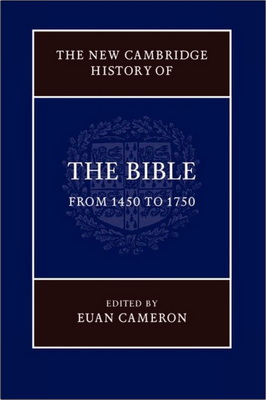 The New Cambridge History of the Bible – Volume 3 - From 1450 to 1750
The New Cambridge History of the Bible – Volume 3 - From 1450 to 1750
Edited by E UA N CAMERON. – Cambridge: Cambridge University Press, 2016. – 997 p.
ISBN 978-0-521-51342-5
The New Cambridge History of the Bible – Volume 3 – Contents
List of figures
List of contributors
Preface
List of abbreviations
Introduction. Euan Cameron
PART I. RETRIEVING AND EDITING THE TEXT IN EARLY MODERN EUROPE
- 1 · The study of tongues: The Semitic languages and the Bible in the Renaissance. Alastair Hamilton
- 2 · The revival of Greek studies in the West. Jill Kraye
- 3 · Humanist Bible controversies. Richard Rex
- 4 · The Old Testament and its ancient versions in manuscript and print in the West, from c . 1480 to c . 1780. Scott Mandelbrote
- 5 · Critical editions of the New Testament, and the development of text-critical methods: From Erasmus to Griesbach (1516–1807). Eldon J. Epp
- 6 · In search of the most perfect text: The early modern printed Polyglot Bibles from Alcalá (1510–1520) to Brian Walton (1654–1658). Alastair Hamilton
PART II. PRODUCING AND DISSEMINATING THE BIBLE IN TRANSLATION
- 7 · Publishing in print: Technology and trade. Andrew Pettegree
- 8 · Latin Bibles in the early modern period. Bruce Gordon and Euan Cameron
- 9 · The Luther Bible. Euan Cameron
- 10 · Bibles in the Dutch and Scandinavian vernaculars to c. 1750. A. A. den Hollander and Ole Peter Grell
- 11 · German Bibles outside the Lutheran movement. Bruce Gordon
- 12 · Bibles in French from 1520 to 1750. Bernard Chédozeau
- 13 · English Bibles from c. 1520 to c. 1750. David Norton
- 14 · Bibles in Central and Eastern European vernaculars to c. 1750. Graeme Murdock
- 15 · Bibles in Italian and Spanish. Emidio Campi and Mariano Delgado
PART III. PROCESSING THE BIBLE: COMMENTARY, CATECHESIS, LITURGY
- 16 · Authority. G . R. Evans
- 17 · Theories of interpretation: The quadriga and its successors. Deeana Copeland Klepper
- 18 · The importance of the Bible for early Lutheran theology. Kenneth G. Appold
- 19 · The Bible in Reformed thought, 1520–1750. Bruce Gordon
- 20 · The Bible in Roman Catholic theology, 1450–1750. Ellie Gebarowski-Shafer
- 21 · Orthodox biblical exegesis in the early modern world (1450–1750). Athanasios Despotis
- 22 · The Bible in the pulpit, 1500–1750. Hughes Oliphant Old
- 23 · The Bible in catechesis, c. 1500– c. 1750. Ian Green
- 24 · The Bible in liturgy and worship, c . 1500–1750. Bryan Spinks
PART IV. THE BIBLE IN THE BROADER CULTURE
- 25 · The Bible in political thought and political debates, c. 1500–1750. Nathan Rein
- 26 · The problem of ‘spiritual discipline’: Apocryphal books among sixteenth-century leaders of the Lutheran churches. Susan C. Karant-Nunn
- 27 · The Bible and the emerging ‘scientifi c’ world-view. Peter Harrison
- 28 · Between humanism and Enlightenment: Morality, reason and history as factors in biblical interpretation. Henninggraf Reventlow
- 29 · The Bible and the early modern sense of history. Euan Cameron
- 30 · The Bible and literature in the European Renaissance. Brian Cummings
- 31 · The Bible and the visual arts in early modern Europe. David H. Price
- 32 · The Bible and music in the early modern period (1450–1750). Markus Rathey
PART V. BEYOND EUROPE
- 33 · The Bible in European colonial thought c. 1450–1750. Fernando Cervantes
- 34 · Conquest and evangelisation: The Bible in colonial America (1500–1750). Daniel Bruno and Néstor Míguez
Afterword. Euan Cameron
Select bibliography
Select Bible bibliography
Index
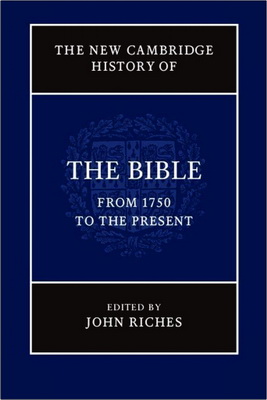 The New Cambridge History of the Bible – Volume 4 - From 1750 to the Present
The New Cambridge History of the Bible – Volume 4 - From 1750 to the Present
Edited by JOHN RICHES. – Cambridge: Cambridge University Press, 2015. – 871 p.
ISBN 978-0-521-85823-6
The New Cambridge History of the Bible – Volume 4 – Contents
List of figures
List of contributors
Preface
List of abbreviations
Introduction. JOHN RICHES
Part I. PRODUCING THE TEXT
- 1 · Critical editions and the development of text-critical methods, part 2: from Lachmann (1831) to the present. Eldon Epp
- 2 · Producing the text: production and distribution of popular editions of the Bible. Leslie Howsam and Scott McLaren
- 3 · Translations of the Bible and the cultural impulse. Lamin Sanneh
Part II. NEW MODES OF STUDY OF THE BIBLE
- 4 · The History of Religions School. Wayne A. Meeks
- 5 · The archaeological study of the Bible. Keith Whitelam
- 6 · Source, form, redaction and literary criticism of the Bible. Janice Capel Anderson
- 7 · Social-scientii c readings of the Bible. Halvor Moxnes
- 8 · Reception history of the Bible. Ian Boxall
- 9 · The uses of the Bible in theology. W. T. Dickens
- 10 · Idealist/Hegelian readings of the Bible. Peter C. Hodgson
- 11 · Liberal readings of the Bible and their conservative responses. Mark Chapman
- 12 · The use of the Bible in dialectical theology. Timothy Gorringe
- 13 · Existential(ist) interpretation of the New Testament. Robert Morgan
- 14 · Liberationist readings of the Bible. Christopher Rowland
- 15 · Feminist readings of the Bible. Jorunn Økland
- 16 · Post-colonial readings of the Bible. Stephen D. Moore
- 17 · Jewish readings of the Bible. Marc Zvi Brettler and Edward Breuer
- 18 · The Bible in philosophy and hermeneutics. Werner G . Jeanrond
- 19 · Fundamentalist readings of the Bible. Harriet Harris
Part III. RECEPTION OF THE BIBLE GEOGRAPHICALLY
- 20 · Reception of the Bible: the Bible in Africa. Gerald West
- 21 · The Bible in North America. Mark Noll
- 22 · The Bible in Latin America. Néstor Míguez and Daniel Bruno
- 23 · The Bible in Asia. R. S. Sugirtharajah
- 24 · The Bible in Europe. David Thompson
Part IV. RECEPTION OF THE BIBLE CONFESSIONALLY
- 25 · The Bible in the Orthodox Church from the seventeenth century to the present day. Constantine Scouteris and Constantine Belezos
- 26 · The reception of the Bible in Roman Catholic tradition. Peter Neuner
- 27 · The Bible in Protestantism from 1750 to 2000. Mark W. Elliott
- 28 · New churches: Pentecostals and the Bible. Edmund J . Rybarczyk
- 29 · The Bible in interfaith dialogue. S. Wesley Ariarajah
Part V. THEMATIC OVERVIEW: RECEPTION AND USE OF THE BIBLE, 1750–2000
- 30 · The Bible in society. Willard M. Swartley
- 31 · The Bible in literature. Elena Volkova
- 32 · The Bible in film. Gaye Ortiz and William R. Telford
- 33 · The Bible in music. Tassilo Erhardt
- 34 · The Bible in art. Michael Wheeler
- 35 · The Bible and science. Nicolaas A. Rupke
- 36 · The Bible and hymnody. J. R. Watson
Conclusion. John Riches
Select bibliography
Index of biblical manuscripts
Index of scriptural sources
General index

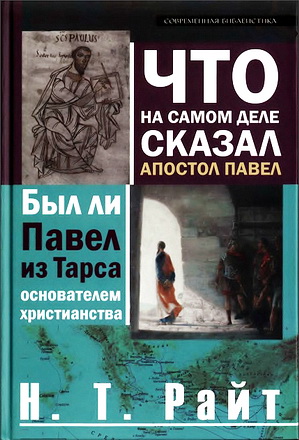

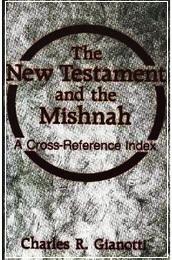
Комментарии (2 комментария)
спасибо
Грандиозное собрание статей по истории Библии! Спасибо огромное!